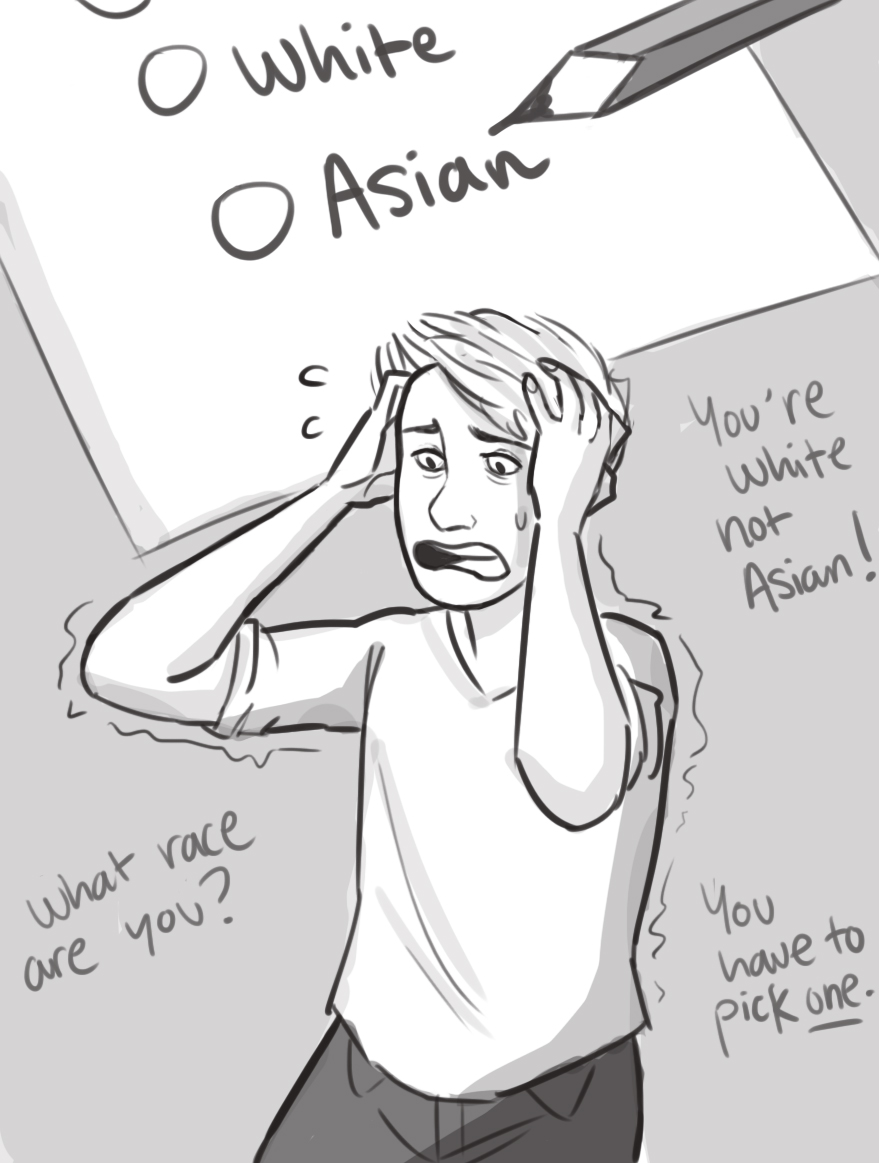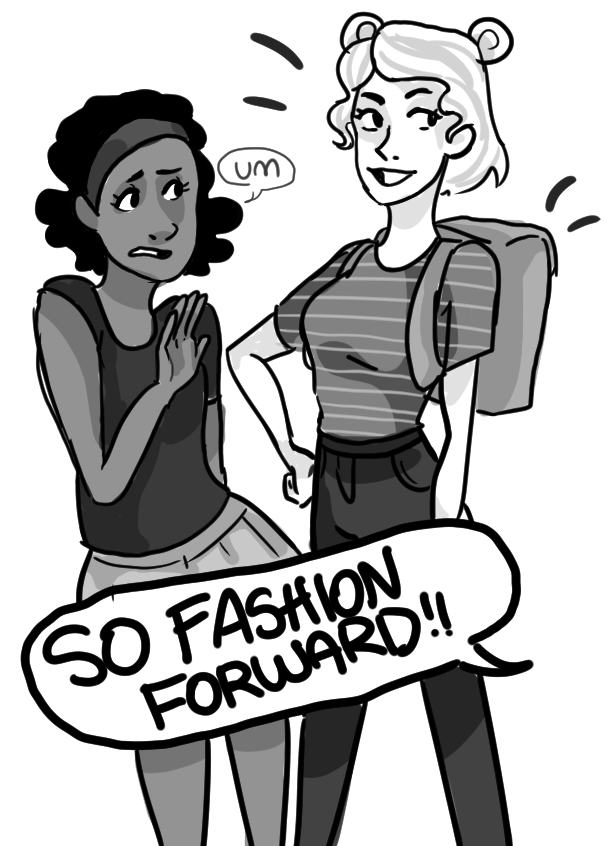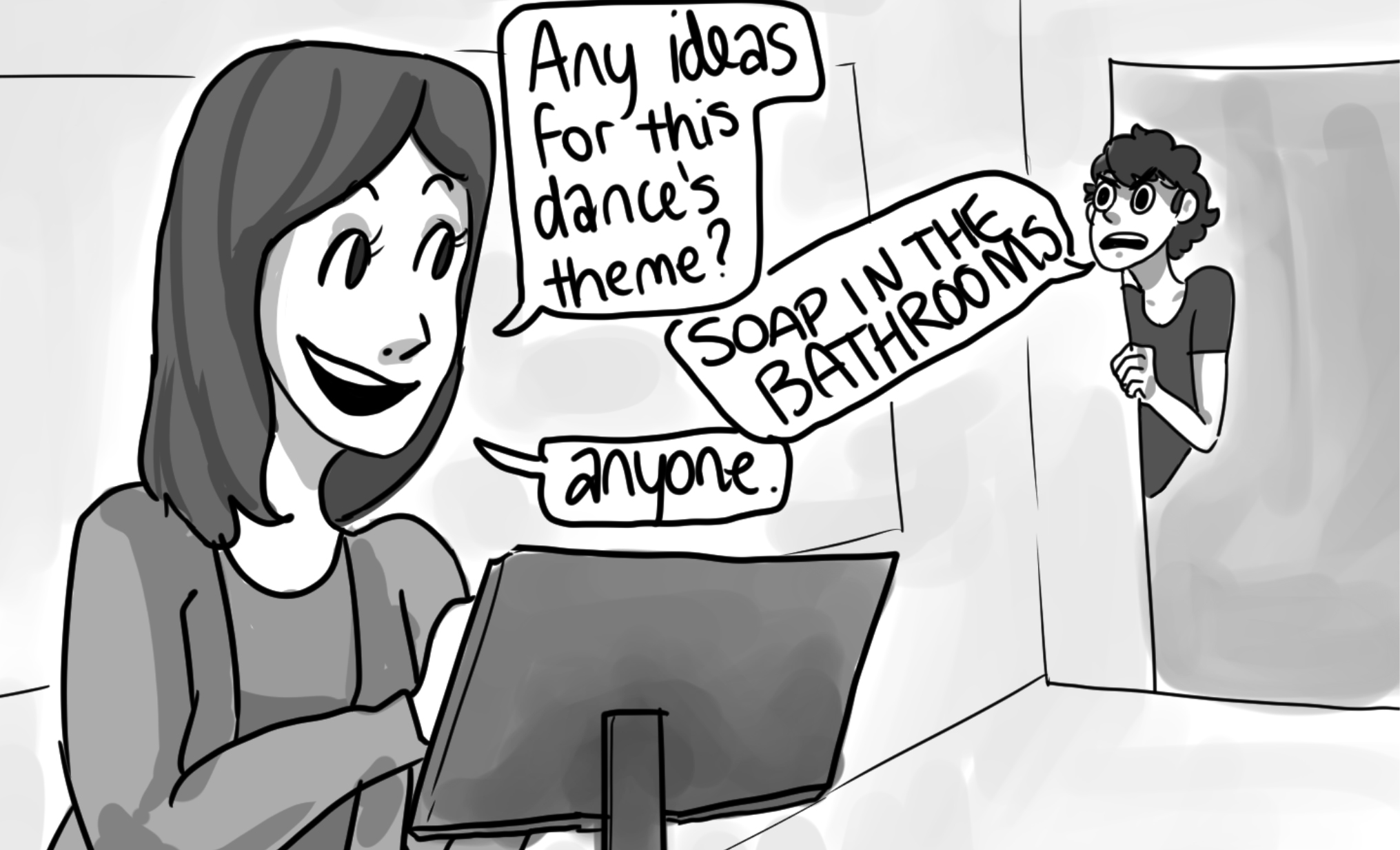By Vaughn Huelsman
Staff Writer
The classic question of who to sit with at lunch was one that afflicted me in early elementary school. On one of the first days of school, I first approached a group of white kids who were at a table, talking and laughing. I sat down at the end of the table and got out my lunch: a bowl of rice that was paired with a Vietnamese dish my mom had worked hard to make. When the kids saw my lunch, their smiles turned into looks of disgust and told to me leave because my food “smelled funny.” I was raised speaking Vietnamese, eating Vietnamese food, and singing Vietnamese songs; I was proud of my heritage. I didn’t understand why they had said that to me, but rather than being alienated, I walked over to a table where some Asian children sat. They looked at me strangely; with my light brown hair and eyes, they too saw me as a strange outsider. That day I sat alone.
As a person of mixed race, I’ve inherited the genetics and traditions of two people of completely different ethnicities, making my experience with race unconventional.
Although I sometimes have control over how others view my racial identity, people often decide for themselves what ethnicity they think I am. In order to fit multiracial people into their rigid classifications, people tend to assign others a race based on stereotypes, stripping them of their individuality. Actions based on these unfounded ideas make people become ashamed of their heritage, which was once a source of pride. As a result they feel as though they need to get rid of what makes them stand out.
Society has a tendency to see people for what is different, and in America, where white is the norm, multiracial people are identified by their non-white heritage. Identifying multiracial people by only one of their races reduces them to less than their whole selves, stripping them of their rights to fully express who they are. This oversimplification, which is often used to marginalize and discriminate, shows the discrepancies between how races are treated.
Society needs to view people for the entirety of their identities, in order to stop the rigid categorization that separates races. Until we break down this barrier, multiracial children will continue to be isolated by others who view them as abnormal because of their unique racial qualities.



